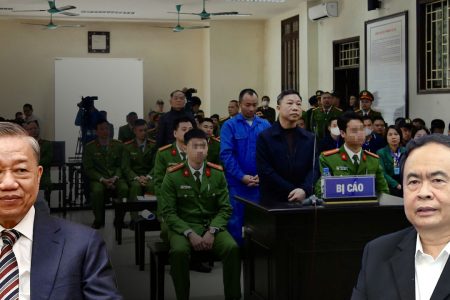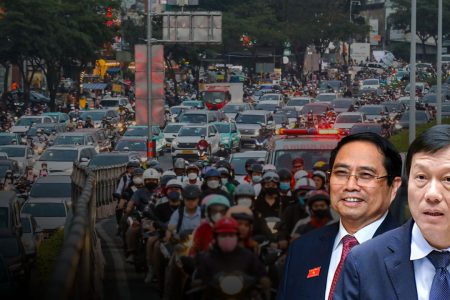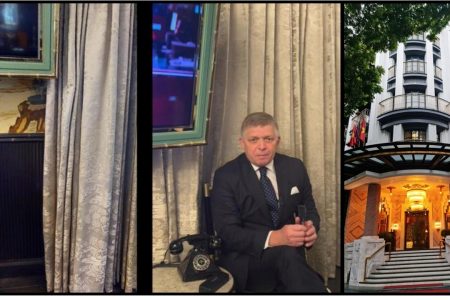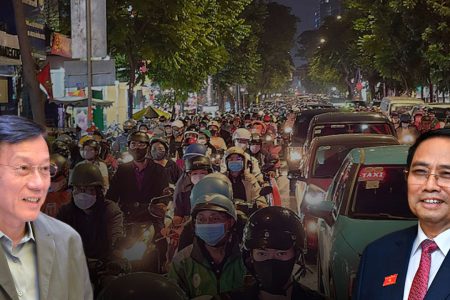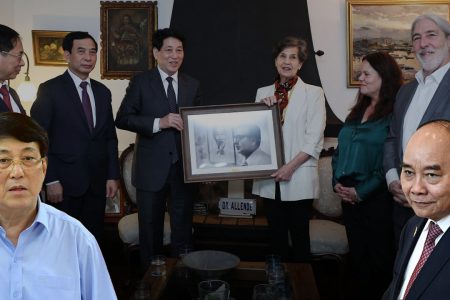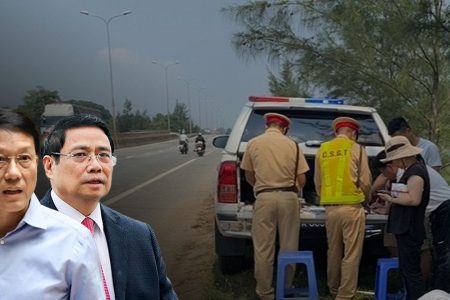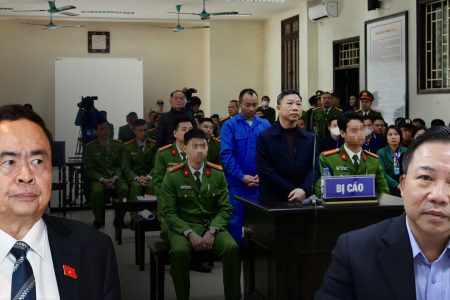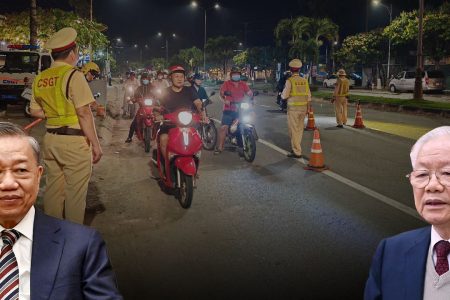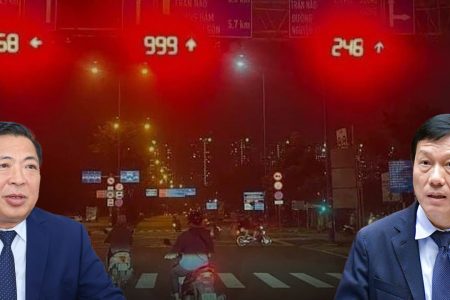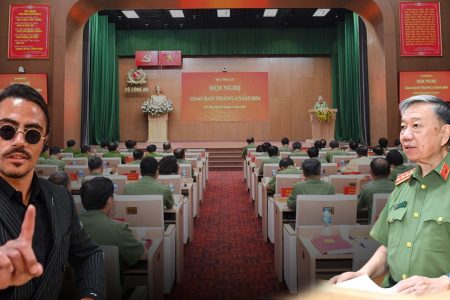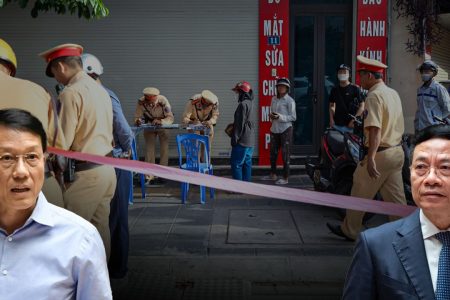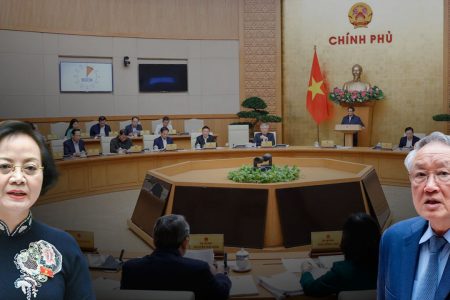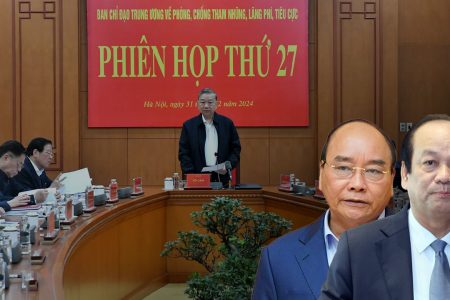Vietnam’s Foreign Ministry said on April 19 that China announced the establishment of the Xisha and Nansha districts to manage the Hoang Sa (Paracels) and the Truong Sa (Spratlys) in the East Sea (South China Sea).
“Vietnam has repeatedly affirmed that Vietnam has sufficient historical evidence and legal basis to assert sovereignty over the Hoang Sa and the Truong Sa,” Spokeswoman Le Thi Thu Hang said in a statement one day after Beijing made its announcement.
“Vietnam’s consistent stance is the strong opposition to the establishment of the so-called ‘Tam Sa city’ and related acts because this is a serious violation of Vietnam’s sovereignty, null and cannot be recognized, not conducive to friendly relations between nations and complicates the situation in the East Sea, region and the world.”
She voiced “to ask China to respect Vietnam’s sovereignty, to abolish wrong decisions related to those acts and should not have similar ones in the future.”
On April 18, China announced the establishment of Xisha District, based on the Phu Lam Island of the Paracels. The headquarters of Nansha District is located at Cross reed of the Spratlys. These two districts are set by Beijing to be under the administration of Tam Sa City in China’s Hainan province.
It is reported that the Beijing government declares that the Xisha District will manage the Paracels, Macclesfield reef and surrounding waters, while Nansha District will manage the Spratlys and adjacent waters.
Vietnam’s protest came more than ten days after the US said it was “deeply concerned” about reports that China had sunk a Vietnamese fishing vessel near the Paracels in the East Sea.
State Department Spokeswoman Morgan Ortagus said in a statement on April 6 that since the outbreak of COVID-19, China has asserted claims in the East Sea as “announcing research stations.” “Located on military bases built on Cross reef and Subi reef, as well as for “special military aircraft” landing on Cross reef.
China has just sent a diplomatic note requesting Vietnam’s forces to leave islands in the Truong Sa.
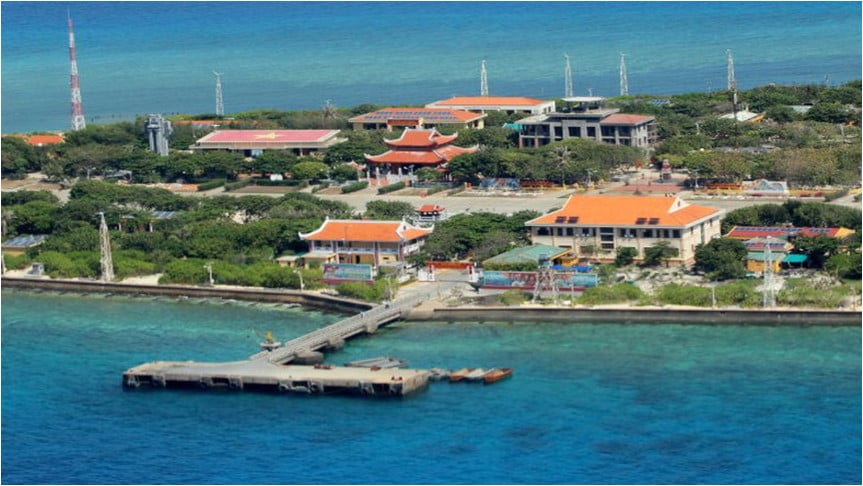
Earlier on April 17, China sent the Official Letter CML/42/2020 to the UN Secretary General António Guterres, with the basic contents translated by Facebook Nguyen Dat An as follows:
- 1. China asserts sovereignty over the Nansha (Hoang Sa or Paracels) and Xisha Islands (Truong Sa or Spratlys) as well as the waters surrounding the islands.
- 2. Beijing reaffirmed that the government of the Democratic Republic of Vietnam recognized it, through the note signed by then Prime Minister Pham Van Dong on September 14, 1958 to then Chinese Premier Zhou Enlai.
- 3. Beijing accused Vietnam of sending troops after 1975 to infringe upon Chinese sovereignty on these islands – that is, violated Pham Van Dong’s assertion.
- 4. Beijing asked Vietnam to withdraw all its troops and facilities from the island chain, because it invaded and illegally occupied.
Mr. Nguyen Dat An said:
- China is beginning to use the official diplomatic channel to gain islands and geopolitical influence in the East Sea.
- China officially uses Pham Van Dong’s diplomatic note to fight diplomatically. And exactly that Pham Van Dong’s diplomatic note is an act of selling the country’s territory.
- China will start the next steps to implement this intention, including warning, calling Vietnam to withdraw troops, and then war.
With this move, it can be said that China is almost ready to occupy both the Spratlys and the Paracels as it did in 1974 (forcibly seizing the Paracels) and 1988 (using force to occupy some islands and reefs in the Spratlys). This is an extremely dangerous while Vietnam and the whole world pay full attention to fighting the Covid-19 pandemic.
In May 2014, a Chinese diplomat and scholar said the 1958 note was proof Vietnam recognizing Paracels as China’s territory.
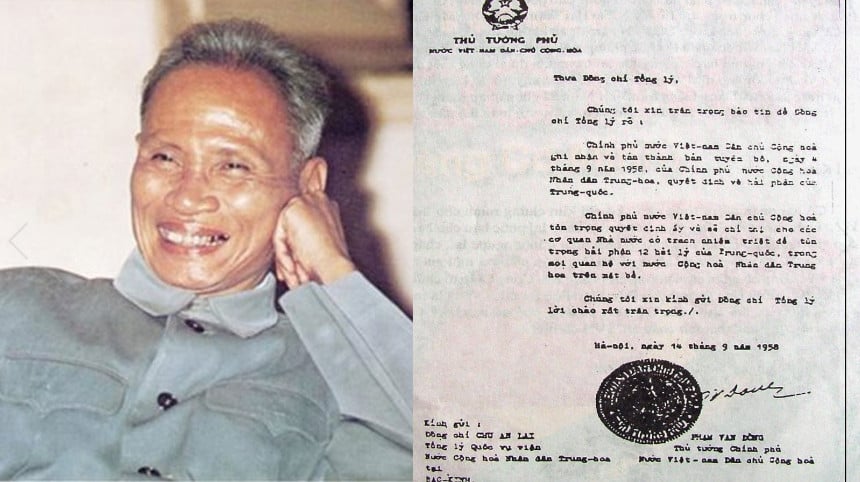
The controversial 1958 note of then Vietnamese Prime Minister Pham Van Dong was mentioned by China in the context of Vietnam and China confronting the HD-981 rig.
On May 20, 2014, China’s diplomatic head to Indonesia published an article in the Indonesian Jakarta Post to defend China.
Liu Hong Yang said the Xisha Islands as “territory which still belongs to China.”
“The location of the islands has been openly recognized by the international community, including Vietnam, for decades from World War II.”
“In a statement issued on September 14, 1958 on behalf of the Vietnamese government, then Vietnamese Prime Minister Pham Van Dong publicly acknowledged the Xisha and other islands in Nanhai as Chinese territory.”
Liu Hong Yang said the Paracels is “territory which still belongs to China.”
Luu Hong Duong alleges that “the recent change of the Vietnamese government and its refusal to recognize Xisha as a Chinese is very shocking.”
“Vietnam clearly violates the principle of” estoppel,” Luu accused.
On February 26, 2014, Mr. Ly Thai Hung from the United States made a commentary on BBC News Vietnam about Vietnam’s dilemma with the note of Prime Minister Pham Van Dong signed in 1958.
Mr. Ly Thai Hung wrote: “Although Prime Minister Pham Van Dong’s 1958 note did not mention Hoang Sa or Truong Sa, the note wrote: ‘The Government of the Democratic Republic of Vietnam acknowledged and agreed with the statement dated September 4, 1958 of the Government of the People’s Republic of China deciding on Chinese waters.”
China’s September 4, 1958 statement states:
“The width of the territorial waters of the People’s Republic of China is 12 nautical miles. This rule applies to the whole territory of the People’s Republic of China, including the Chinese land on the mainland and offshore islands, Taiwan and its adjacent islands, Penghu Islands, Dong Sa Islands, Xisha Islands, Zhongsha Islands, Nansha Islands, and other islands belonging to China.”
Thus, whatever the explanation, the 1958 Official Letter acknowledged China’s sovereignty over the South China Sea including Vietnam’s Paracel and Spratly Islands, plays a solid evidence giving China an excuse to tie this note to base their justification of aggression today,” Mr. Ly Thai Hung said.
Also during the period when the whole world is focusing to deal with the Covid-19 pandemic, China started a series of provocative acts in the South China Sea and now it begins to issue the 1958 note signed by Prime Minister Pham Van Dong as is a compelling evidence, as a secret country aimed directly at the Government of the Socialist Republic of Vietnam as a homogenous subject and inheriting the responsibility of the Government of the Democratic Republic of Vietnam 1958.
Vietnam can avoid troubles created by PM Dong’s dilomatic note by admitting the status of the independent National subject of the Republic of Vietnam which was led by Mr. Nguyen Van Thieu, who was then claiming sovereignty and sending army to protect the archipelago before it was being seized by China on January 19, 1974. However, the Government of the Socialist Republic of Vietnam has never formally made such arguments.
The US said China should stop ‘bullying’ in the South China Sea
The US on Saturday called on China to stop “bullying behavior” in the South China Sea and said it was concerned about reports of Beijing’s “provocative actions” on offshore oil development activities in disputed waters.
Three regional security sources told Reuters on Friday that a Chinese government survey ship was clinging to a probe operated by Malaysia’s state-owned oil company Petronas in that waters.
China’s Haiyang Dizhi 8 earlier this week was seen off Vietnam, where last year it conducted suspected oil and gas exploration activities in areas within Vietnam’s exclusive economic zone.
“The US is concerned about reports of repeated Chinese provocations aimed at offshore oil development by other sovereign states,” the State Department said in a statement sent to Reuters answering questions about the presence of China’s Haiyang Dizhi 8 in Malaysian waters.
“In this case, (China) should stop its bullying and not engage in this kind of provocation and instability,” the statement said.
China’s actions threaten energy security in the region and undermine the free and open Indo-Pacific energy market, the statement added.
Earlier this week, when China’s Haiyang Dizhi 8 appeared in waters off Vietnam, the Chinese Foreign Ministry’s spokesman said the ship was carrying out normal activities and accused US officials of defaming Beijing.
China claims nearly all of the resource-rich South China Sea and is also a vital trade route. The Philippines, Brunei, Vietnam, Malaysia and Taiwan also have overlapping claims.
Regarding the recent moves of increasing Chinese tensions from China, on April 17, 2020 Professor Nguyen Manh Hung, an international diplomat researcher from George Mason University, USA, made a comment: “China’s strategy is to be soft, to let go and take advantage of opportunities. The international community and neighboring countries are struggling to cope with the Covid-19 pandemic while China likely controled it successfully. At the same time, a US aircraft carrier is paralyzed by the disease.
Recently both the State Department and the US Department of Defense have joined in to declare deep concern or specifically condemn the Chinese behavior of sinking Vietnamese fishing vessels near the Paracels.
It is a new signal reflecting a consensus in the United States of a tougher policy with China from the pressure of the US military, strategists and Congress, along with the economic-trade conflict. The confrontation between the two giant countries will be pushed up on the occasion of the Covid-19 outbreak, Prof. Hung commented.
“China’s ultimate goal does not change, but its implementation depends on the calculation of China’s opportunity. This opportunity is subject to temporary changes, such as the Covid-19 pandemic, and changes in the force balance.
Small countries in the region must act wisely to protect their rights and sovereignty.
If for these reasons, America’s position is down, then China’s position will be up, and China’s pressure on small countries in the region will increase. That is the concern of these countries.
In general and in the long run, the world has to deal with the “Chinese challenge” and the change is happening in the world order, who goes up and down, stemming from strategic competition between the US and China.
However, the Covid-19 pandemic also undermines America’s position, not only economically but also in its leadership towards creating a world order that reflects the value of Western humanity. After World War II, the United States led and unified the so-called “Free World” to rebuild the crumbling economy and society in Europe, fighting against communist expansion. America benefits but also has to sacrifice a lot.
The balance of power and world order is changing and the US leadership and coordination is needed to address common concerns, such as climate change, economic recovery and Chinese challenges. Without this leadership and coordination, the world will be divided into many divisions to deal with China’s challenges.
It is a concern for countries that they do not want to live in a new Chinese-led world order,” Prof. Hung reached a conclusion.
China makes trap, setting up districts to administer Vietnam’s Paracels and Spratlys
Thu Thuy from Hochiminh city – Thoibao.de (Translated)



